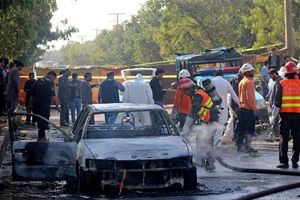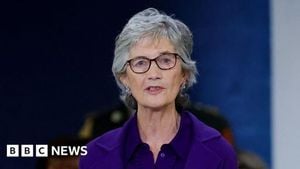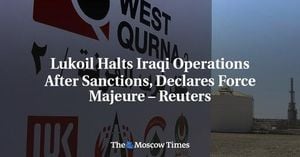In a heated exchange that has reignited debate over immigration enforcement and local autonomy, Tom Homan, President Donald Trump’s appointed border czar, publicly challenged Democratic leaders in California and Illinois to recognize the role of Immigration and Customs Enforcement (ICE) in removing violent, undocumented immigrants from their streets. The remarks, made during an exclusive interview with Breitbart Editor-in-Chief Alex Marlow on 'The Alex Marlow Show' podcast on October 11, 2025, have drawn sharp lines between federal immigration authorities and city officials determined to limit their reach.
“You’re welcome because ICE has taken thousands and thousands of public safety threats off the streets of California,” Homan declared, directly addressing California Governor Gavin Newsom and Los Angeles Mayor Karen Bass—both vocal critics of ICE’s enforcement tactics. According to Breitbart News, Homan didn’t stop there. He extended his pointed message to Illinois Governor J.B. Pritzker and Chicago Mayor Brandon Johnson, saying, “Whether it’s Pritzker, Newsom, Bass, or Brandon Johnson, you’re welcome for us making your communities safer. If you want to sit on the sidelines and watch us make your communities safer, have at it. Shame on you.”
The interview comes against the backdrop of escalating tensions between federal authorities and so-called sanctuary cities—municipalities that limit cooperation with federal immigration enforcement. Nowhere is this friction more apparent than in Chicago, where Mayor Brandon Johnson recently signed the “ICE Free Zone” executive order on October 6, 2025. The order, as reported by Data for Democracy and confirmed by official city communications, prohibits ICE agents from using any city-owned property to stage or launch enforcement operations.
The executive order is an extension of Chicago’s “Protecting Chicago” initiative, which encourages local businesses and community organizations to join citywide efforts to safeguard immigrant communities. Mayor Johnson, in a statement accompanying the order, emphasized the city’s commitment to constitutional rights and democratic values: “With this Executive Order, Chicago stands firm in protecting the constitutional rights of our residents and immigrant communities and upholding our democracy.”
This move by Johnson was not made in a vacuum. Just two days before the order was signed, ICE agents were allegedly attacked by protesters in Chicago’s South Side. According to dispatch audio and multiple media outlets, the agents—on routine patrol—were boxed in by ten cars and surrounded by demonstrators. The situation escalated to the point where the agents called for help from local police. However, according to two senior Chicago police sources cited by Data for Democracy, officers were told by the chief of patrol not to intervene, a claim that the Chicago Police Department has since denied. Still, dispatch recordings reportedly confirm that the directive was issued, and the dispatcher’s initial surprise was quickly replaced by compliance with the order.
This incident has become a flashpoint in the broader struggle between local and federal authorities. Homan seized on the episode to criticize Johnson and others for what he views as a failure to support law enforcement officers tasked with maintaining public safety. “If you want to sit on the sidelines and watch us make your communities safer, have at it. Shame on you,” Homan reiterated during the interview, underscoring his belief that ICE’s efforts are essential in reducing crime and protecting citizens.
For many city officials, however, the issue is not so clear-cut. Sanctuary policies, they argue, are not about harboring criminals but rather about fostering trust between immigrant communities and local law enforcement. By limiting cooperation with ICE, these cities aim to encourage undocumented residents to report crimes and cooperate with investigations without fear of deportation. As Mayor Johnson put it, the executive order is about “protecting the constitutional rights of our residents.”
Yet, critics like Homan contend that such policies create safe havens for dangerous individuals. In his interview with Marlow, Homan insisted that ICE’s removal of “thousands and thousands of public safety threats” from California and other sanctuary states is proof of the agency’s value. He urged leaders like Newsom, Bass, Pritzker, and Johnson to acknowledge the positive impact of federal enforcement, even as they publicly denounce it.
The clash has national implications. Sanctuary policies have long been a lightning rod in the immigration debate, with supporters arguing they are necessary to protect vulnerable communities and opponents claiming they undermine the rule of law. The Trump administration, and now its allies, have prioritized aggressive enforcement and sought to penalize jurisdictions that resist cooperation with ICE.
Meanwhile, local officials face pressure from immigrant advocacy groups and constituents who fear the consequences of unchecked federal action. The recent incident in Chicago, where ICE agents were reportedly left without local backup, highlights the very real dangers and dilemmas faced by both law enforcement and city leaders.
Adding to the complexity, the “ICE Free Zone” executive order is not the first of its kind. Cities like San Francisco, New York, and Los Angeles have enacted similar measures, each tailored to local concerns and legal frameworks. These policies often draw sharp rebukes from federal officials, who argue that they impede the apprehension of individuals with serious criminal records.
For his part, Homan framed the debate in stark terms. “You’re welcome for us making your communities safer,” he said, suggesting that the benefits of ICE’s work are felt even by those who oppose it. His challenge to Newsom, Pritzker, Bass, and Johnson is as much about political theater as it is about policy—an attempt to force a public reckoning over the costs and benefits of sanctuary status.
But for those on the ground in cities like Chicago, the situation is far from academic. The standoff between ICE agents and protesters, the subsequent police response (or lack thereof), and the swift issuance of the “ICE Free Zone” order all point to a volatile mix of public safety, civil rights, and political calculation. Each side accuses the other of endangering the community, and the truth, as is so often the case, likely lies somewhere in the middle.
As the debate rages on, one thing is clear: the relationship between federal immigration authorities and local governments remains as contentious as ever. The events of early October 2025—captured in dispatch recordings, executive orders, and fiery interviews—offer a vivid illustration of the challenges facing American cities as they navigate the intersection of law enforcement, immigration, and democracy itself.




